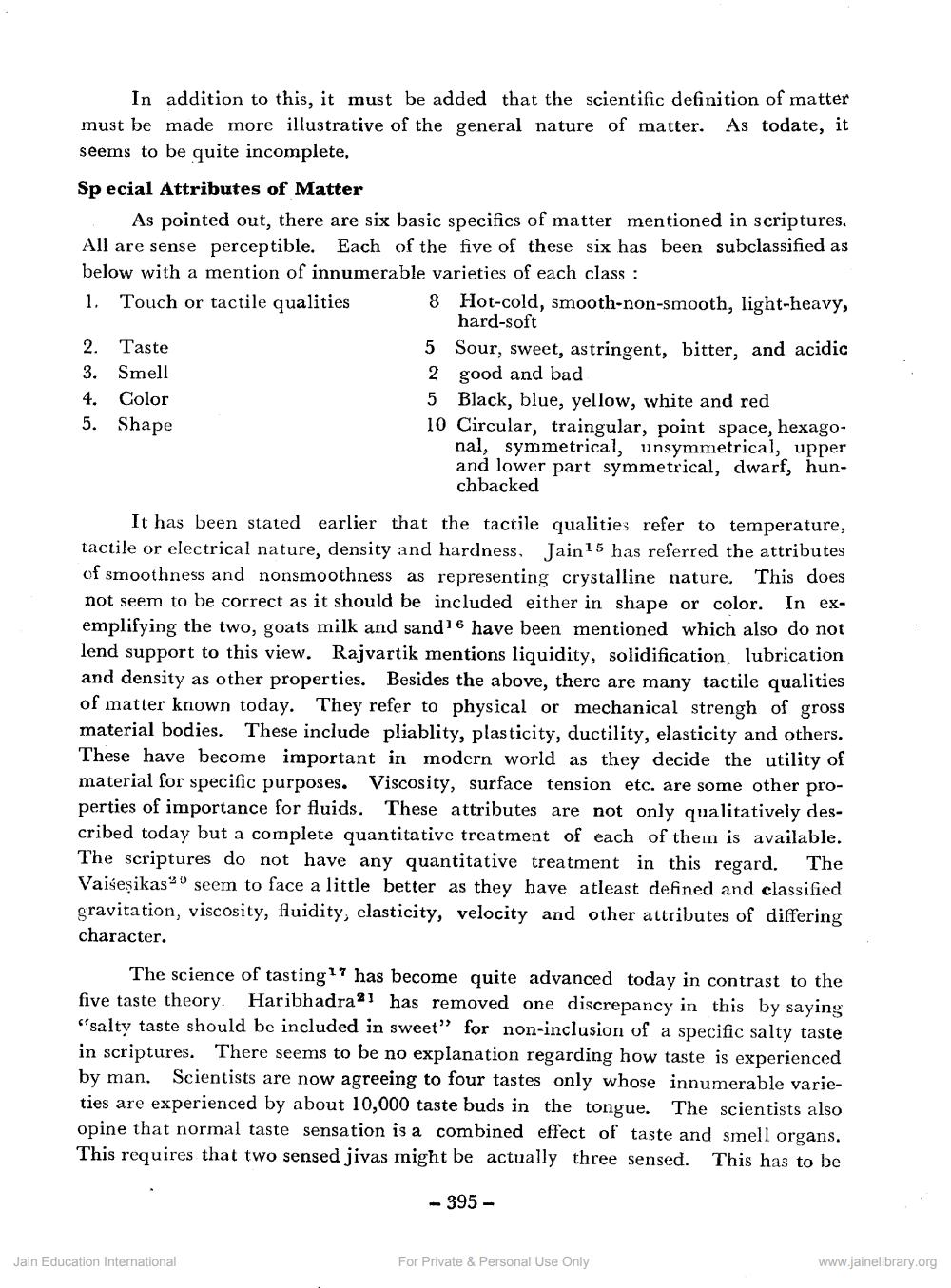________________
In addition to this, it must be added that the scientific definition of matter must be made more illustrative of the general nature of matter. As todate, it seems to be quite incomplete, Special Attributes of Matter
As pointed out, there are six basic specifics of matter mentioned in scriptures. All are sense perceptible. Each of the five of these six has been subclassified as below with a mention of innumerable varieties of each class : 1. Touch or tactile qualities 8 Hot-cold, smooth-non-smooth, light-heavy,
hard-soft 2. Taste
5 Sour, sweet, astringent, bitter, and acidic 3. Smell
2 good and bad 4. Color
5 Black, blue, yellow, white and red 5. Shape
10 Circular, traingular, point space, hexago
nal, symmetrical, unsymmetrical, upper and lower part symmetrical, dwarf, hunchbacked
It has been stated earlier that the tactile qualities refer to temperature, tactile or electrical nature, density and hardness, Jain 15 has referred the attributes of smoothness and nonsmoothness as representing crystalline nature. This does not seem to be correct as it should be included either in shape or color. In exemplifying the two, goats milk and sand6 have been mentioned which also do not lend support to this view. Rajvartik mentions liquidity, solidification lubrication and density as other properties. Besides the above, there are many tactile qualities of matter known today. They refer to physical or mechanical strengh of gross material bodies. These include pliablity, plasticity, ductility, elasticity and others.
These have become important in modern world as they decide the utility of material for specific purposes. Viscosity, surface tension etc. are some other properties of importance for fluids. These attributes are not only qualitatively described today but a complete quantitative treatment of each of them is available. The scriptures do not have any quantitative treatment in this regard. The Vaiseșikas? V seem to face a little better as they have atleast defined and classified gravitation, viscosity, fluidity, elasticity, velocity and other attributes of differing character.
The science of tasting17 has become quite advanced today in contrast to the five taste theory. Haribhadra2] has removed one discrepancy in this by saying "salty taste should be included in sweet" for non-inclusion of a specific salty taste in scriptures. There seems to be no explanation regarding how taste is experienced by man. Scientists are now agreeing to four tastes only whose innumerable varieties are experienced by about 10,000 taste buds in the tongue. The scientists also opine that normal taste sensation is a combined effect of taste and smell organs. This requires that two sensed jivas might be actually three sensed. This has to be
-395 -
Jain Education International
For Private & Personal Use Only
www.jainelibrary.org




